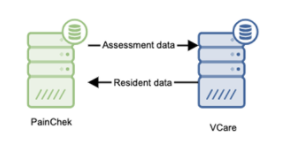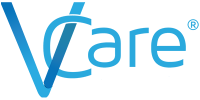This post was created in partnership with PainChek, the world’s first clinically proven digital pain assessment tool. Using AI, facial recognition and smartphone technology.
The Role of Technology in Aged Care
The introduction of new technologies into the nursing home sector presents vast opportunities to improve treatment outcomes and the quality of care within these settings. However, embracing data-sharing and facilitating holistic patient care comes with a number of considerations—particularly with regard to integration between aged care software solutions.
In this article, we explore the critical role technology plays in enabling best practice in aged care, and considerations for ensuring integration partners are aligned to optimise the delivery of care.
There’s little doubt that technology is rapidly transforming the aged care sector and the ways in which resident care is managed and delivered.
In particular, cloud-based aged care software solutions are facilitating better outcomes by enabling multiple users and systems to simultaneously enter and exchange information. Data is automatically updated and synchronised in real-time, increasing reliability, reducing the risk of errors, and enabling faster, more accurate assessment and treatment.
A report by Medical Director revealed that 80% of clinicians believe data-sharing has the potential to improve the aged care industry through benefits such as increased care coordination, greater efficiency and better research capabilities. However, the industry-wide uptake of relevant technology is a challenge, for reasons including:
- Concerns regarding the security of information being stored or sent
- Inadequate communication between systems, practices, and healthcare professionals
- A lack of understanding around the importance of interoperability between integration partners
Educating aged care facilities on the importance of interoperability and the steps needed to protect the flow of sensitive data must remain a key focus. Without this, harnessing the advantages of data integration between aged care technologies may experience significant setbacks.
Interoperability Case Study: VCare and PainChek
PainChek is a digital pain assessment tool that utilises AI and facial recognition technology to detect and assess pain, especially in those who cannot self-report, such as aged care residents living with dementia.
PainChek is now licensed in over 1,600 aged care facilities covering four regions of the world, and more than 500,000 cumulative pain assessments have been conducted to date. This has enabled better pain management for people who cannot reliably verbalise their pain—particularly those living with dementia and cognitive impairment.
VCare and PainChek are fully interoperable, meaning pain assessments completed in PainChek automatically flow through to VCare in real-time, and resident data recorded in VCare is automatically shared in PainChek.
At its simplest, the PainChek and VCare integration can be represented as:

The integration uses a combination of triggers to detect and synchronise changes to VCare patients or new PainChek assessments.
Resident changes within VCare are synchronised immediately with PainChek, for example, when:
- A new resident is created
- An existing resident is updated
- The admission details or status of a resident is changed
Together, VCare and PainChek provide an up-to-date, comprehensive overview of resident data with no duplication or double-handling. This not only gives back critical time to clinical staff but also enables best-practice care for all residents whose data is stored within the two systems.
